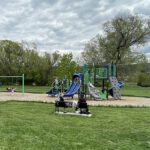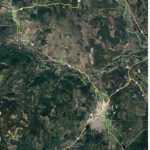Home »

Challenges, vandalism impact deer cull
The recent effort to help reduce incidents of deer aggression in Cranbrook concluded last week, with three animals removed over a two-week period, a March 21 City of Cranbrook media release reports.
The hides and antlers are being donated to the Ktunaxa Nation, with 70 lbs. of game meat being donated and distributed to three local non-profit organizations for human consumption, the City of Cranbrook reported this morning.
 All meat preparation was conducted by qualified butchers and processed in facilities inspected and approved by Interior Health and the Ministry of Forests, Lands and Natural Resource Operations and Rural Development (MFLNRORD).
All meat preparation was conducted by qualified butchers and processed in facilities inspected and approved by Interior Health and the Ministry of Forests, Lands and Natural Resource Operations and Rural Development (MFLNRORD).
A wildlife permit was issued to the city on February 11, by MFLNRORD and was valid until March 15, allowing for a total of 50 animals to be removed (35 mule deer and 15 white-tailed deer).
Contractors faced several challenges during the population management efforts, including three clover traps being vandalized; one located on public property and two on private property.
Hidden trail cameras at one location captured images of an unidentified person releasing a captured deer. Those images have been provided to both the RCMP and the BC Conservation Officer Service and an investigation is underway.
“Other challenges included the short time window for the wildlife permit and the extremely cold weather, which reduced deer activity,” stated the city release.
The city targeted specific areas for deer removal based on public complaints of deer aggression received by the city in 2018.
“Results suggest that most public concerns around aggression-related incidents continue to be around white-tailed deer, not mule deer, which is similar to data collected in 2017. Since 2010, mule deer had historically been reported to be the more aggressive of the two species,” the city reported.
“The City of Cranbrook remains committed to manage the urban deer population through a combination of population reduction and public education. The city continues to work hard to meet the expectations of residents around urban deer management in the community and appreciates the patience and understanding of the public as this work continues,” the city media release outlined.
e-KNOW







